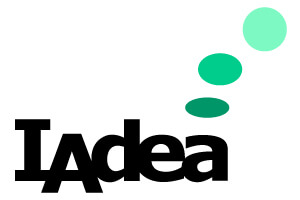
You may be asked by the Facility Management team to find and validate workspace management tools. It’s not just about syncing calendars—it’s about systems that impact employee experience, real estate strategy, and long-term support. And ITSMs are expected to get it right, with no extra staff and no do-overs.
This guide shows you what to really look for—beyond demos and spec sheets. Backed by IAdea’s 20+ years of enterprise deployments and certified integrations with Microsoft, Planon, ServiceNow and more, it’s your blueprint to validate not just the tools—but the vendor behind them.
Know the Real Stakes—What Happens When You Get It Wrong
When workspace tools fail, it’s rarely because something broke in a demo. It’s what comes after—the support tickets, the adoption gaps, and the disconnect between FM’s expectations and IT’s reality.
Poor validation doesn’t just mean a failed project; it creates a series of operational nightmares that land squarely on your team:
- Ghost bookings that clog up calendars, confuse FM, and lead to low hot-desking utilization
- Employees abandoning the system for emails and sticky notes
- A helpdesk flooded with “Why can’t I check in?” tickets
- Manual fixes that turn into IT-owned shadow projects
Most of these headaches stem from skipped steps during validation. The good news? They’re avoidable—if you know what to look for.
What a Workspace Management Ecosystem Should Cover
When ITSMs validate workspace tools, the most dangerous mistake is to focus on feature checklists while overlooking how the system works as a whole. A true workspace management ecosystem isn’t just a room panel here and a desk sign there — it’s a network of interoperable, user-friendly, and IT-manageable components that span the full lifecycle of hybrid work.
Here’s what your validation checklist should really cover:
Booking & Check-In Enforcement
Look for room and desk booking tools that don’t just record reservations — they enforce presence. Whether via USB-C docking or an ID badge tap, the best systems create a verifiable, timestamped check-in linked to a real user. This is crucial for solving the ROI challenges of desk booking.
Real-Time Availability Visibility
Clear visual cues help employees instantly see what’s free and what’s taken. Think LED light bars (like IAdea’s XDS series) for rooms and tri-color e-paper for desks (as in the WBP-130).
Device-Level Presence Validation
Instead of relying on anonymous sensors, prioritize platforms that tie presence to intentional user actions — docking a laptop, tapping a badge, or touching a panel. This gives IT the auditable proof needed to address ghost bookings and resource misuse.
Wayfinding & Navigation
Especially in larger or unfamiliar offices, wayfinding makes or breaks the user experience. Platforms that integrate with providers like 22Miles (a certified IAdea partner) can deliver interactive maps, ADA-compliant navigation, and even emergency alerts across shared displays.
Microsoft 365 & Google Workspace Integration
Employees won’t adopt tools that don’t fit into their daily workflow. Ensure the system supports full bi-directional sync with Outlook and Google Calendar — not just basic event imports. IAdea’s “Booking for Outlook” connector is a gold-standard example.
Fleet-Level Device Management
Managing a global estate of devices isn’t optional — it’s mission-critical. Your vendor should offer:
- Zero-touch deployment
- Remote firmware/app updates
- Group-based policy control
Platforms like IAdeaCare™ allow full lifecycle control from a single pane of glass, significantly reducing IT overhead.
Enterprise-Grade Security & Access Control
Don’t settle for consumer-grade. Check for:
- ISO/IEC 27001 certification
- Support for 802.1x and SCEP
- Role-based admin control & SSO integration
- Physical access control interfaces (like the WRP-1000’s built-in door lock support)
Actionable Analytics
Space management isn’t just about bookings — it’s about insight. Choose systems that turn verifiable presence data into dashboards and reports your leadership can trust.
See a BYOM-Ready Device in Action: WBD‑0500
If you’re wondering what a validated, enterprise-grade workspace device looks like in practice, take a look at the WBD‑0500. It’s IAdea’s all-in-one desk booking and BYOM docking panel—designed to solve common workspace management challenges at scale. Built for modern huddle spaces, it enables:
-
One-cable laptop docking for display, mic, and camera
-
Real-time presence verification without sensors
-
Auto check-in and booking sync
-
Remote health status and usage tracking via IAdeaCare
All in a tabletop device that needs no walls, no AV integrator, and no daily IT babysitting.
Explore the WBD‑0500 and see how it simplifies BYOM deployment
How to Validate a Vendor—Not Just the Product
A successful deployment depends as much on the maturity of the vendor as it does on the features of the product. The slickest demo means nothing if the company behind it can’t scale, integrate, or support your enterprise for the long haul. Shifting your focus from a simple feature checklist to a rigorous vendor validation is the single most important step you can take to de-risk your project.
Ask these key questions to determine if a potential vendor is a true strategic partner.
Do they support open standards?
A vendor’s commitment to open standards is your best defense against proprietary lock-in. A platform built on common standards ensures your hardware investment can adapt as your software strategy evolves. Look for vendors who explicitly support widely used technologies like Android for the core operating system, HTML5 and JavaScript for content creation, and RESTful APIs for custom integrations.
Are their integrations certified?
There is a critical difference between a vendor claiming an integration works and having an officially certified integration with major enterprise platforms. A certified app, such as one available in the official ServiceNow App Store, has been vetted and approved by the platform owner, assuring you of its stability and security. Look for formal, announced partnerships with IWMS leaders like Planon or top-tier status like IAdea’s Platinum Partnership with ServiceNow, a platform used by 85% of Fortune 500 companies.
Do they offer centralized device management?
For any deployment beyond a small pilot, a powerful and secure remote device management (RDM) platform is non-negotiable. This is the key to lowering your total cost of ownership (TCO) by reducing IT overhead. A vendor must provide a “single pane of glass” for the entire hardware fleet, like the IAdeaCare platform, which enables critical functions like zero-touch deployment for new devices, scheduled remote firmware updates, and group-based policy management.
Can they scale to hundreds or thousands of endpoints?
A solution that works for 20 rooms can fail spectacularly when deployed across a global enterprise. Demand proof that the vendor can operate at scale. Look for an established global footprint, such as a vendor with “close to one million displays globally”, and a history of successful projects with demanding clients, including Fortune 500 companies and government entities.
Do they help you avoid a patchwork of tools?
The goal is to acquire a cohesive ecosystem, not a collection of disparate parts that create integration nightmares and vendor finger-pointing. A strategic vendor offers a unified solution for the entire physical layer of your workspace. By providing a comprehensive hardware portfolio—from interactive room panels to desk booking docks and kiosks—all from a single provider, you simplify procurement, support, and lifecycle management, effectively avoiding the “patchwork” trap.
The Strategic Advantage of a Full-Stack Vendor
When workspace technology works well, nobody notices it. But when it fails — when check-ins glitch, displays go dark, or bookings don’t sync — IT is the first to hear about it. The difference often comes down to one factor: whether you partnered with a full-stack vendor, or stitched together a fragile mix of point solutions.
Here’s why more ITSMs are prioritizing vendors who offer a unified ecosystem from the start:
- Less Risk, Faster Deployment: With a single vendor providing booking devices, displays, check-in logic, and MDM capabilities, you skip weeks of integration testing and troubleshooting. Deployment becomes more predictable — and less prone to failure.
- Unified Support & Firmware Path: One partner means one versioning cycle, one update schedule, and one support team who understands how all the parts work together. No more finger-pointing between hardware and software providers.
- Lower TCO Through Simpler Management: When everything is built to work together — booking, presence detection, analytics, remote management — IT spends less time babysitting systems and resolving edge-case issues. Platforms like IAdeaCare™ offer fleet-wide management from a single dashboard, slashing support overhead.
- A Future-Proof Platform: Need to scale from 50 to 500 rooms? Want to add wayfinding later? Full-stack vendors give you room to grow without starting over. You’re not just buying devices — you’re building a foundation for long-term workspace strategy.
Conclusion: Don’t Just Pick a Tool—Validate the Whole Ecosystem
You’re not just selecting a booking panel or a desk sensor. You’re shaping how your workplace operates — and how your IT team will support it — for the next five years.
The real decision isn’t about hardware specs. It’s about whether your vendor brings a scalable ecosystem, enterprise-grade integration, and a clear roadmap to help you evolve. That’s what turns a workspace deployment into a long-term success.
When you validate the full stack — not just the tool — IT steps beyond day-to-day support and into the role of strategic enabler. You become the architect of a workplace that’s not only flexible, but future-ready.
Now That You See the Whole Picture—Here’s Where to Go Next
Find out how to optimize real-world desk utilization
Contact IAdea to see how IAdea supports scalable, seamless workspace transformation.

